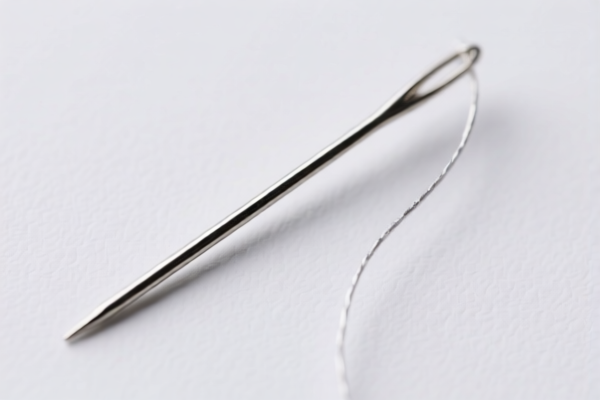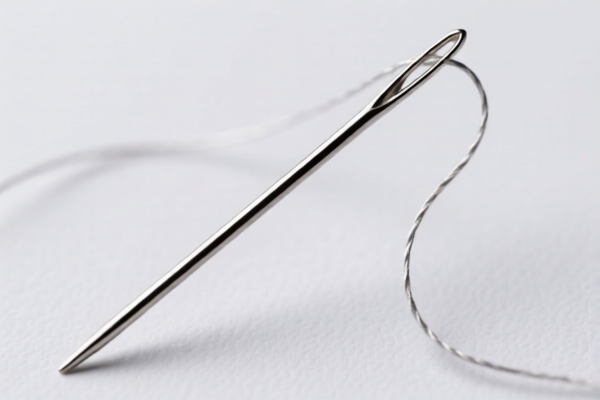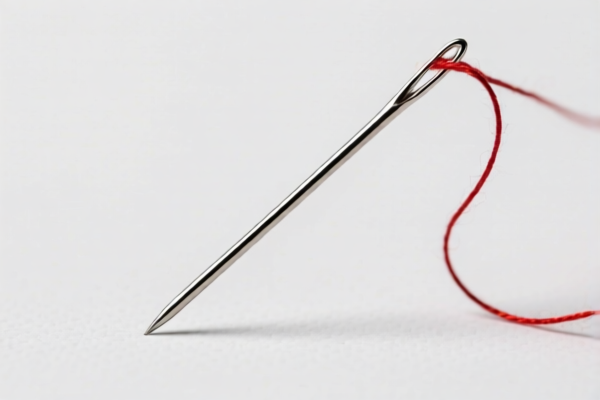| HS Code | Official Doc | Tariff Rate | Origin | Destination | Effective Date |
|---|---|---|---|---|---|
| 7319901000 | Doc | 62.5% | CN | US | 2025-05-12 |
| 7319909000 | Doc | 65.4% | CN | US | 2025-05-12 |
| 7317006530 | Doc | 80.0% | CN | US | 2025-05-12 |
| 7317005519 | Doc | 80.0% | CN | US | 2025-05-12 |
| 8305906000 | Doc | 43.2% | CN | US | 2025-05-12 |
| 8305903010 | Doc | 30.0% | CN | US | 2025-05-12 |
| 7415100000 | Doc | 57.5% | CN | US | 2025-05-12 |
| 7415100000 | Doc | 57.5% | CN | US | 2025-05-12 |
| 8308203000 | Doc | 55.0% | CN | US | 2025-05-12 |
| 8308909000 | Doc | 57.7% | CN | US | 2025-05-12 |
| 8205511500 | Doc | 55.0% | CN | US | 2025-05-12 |
| 8205595505 | Doc | 60.3% | CN | US | 2025-05-12 |
| 8206000000 | Doc | The rate of duty applicable to that article in the set subject t+30.0% | CN | US | 2025-05-12 |
| 8207903085 | Doc | 60.0% | CN | US | 2025-05-12 |
| 8207904500 | Doc | 34.8% | CN | US | 2025-05-12 |




Steel Needle
A steel needle is a slender, pointed instrument traditionally used for sewing and embroidery, constructed from steel.
Material
Typically made from high-carbon steel, though stainless steel is also common, particularly in modern manufacturing. High-carbon steel provides strength and the ability to hold a sharp point, while stainless steel offers corrosion resistance. Alloys may be added to enhance properties like flexibility or tensile strength.
Purpose
The primary purpose of a steel needle is to create small holes in fabric to draw thread through, thereby joining pieces of material together. They are also used for a variety of other tasks involving manipulation of fabrics and threads.
Function
A needle functions by concentrating force onto a small area, allowing it to penetrate fabric fibers. The eye of the needle facilitates the passage of thread, which is then pulled through the fabric, creating a stitch. The point's sharpness and the needle's overall shape determine the ease and efficiency of penetration and the type of fabric it can effectively work with.
Usage Scenarios
- Sewing: The most common application, used for hand-sewing repairs, alterations, and construction of garments and other textile items.
- Embroidery: Used to create decorative designs on fabric using various stitching techniques.
- Quilting: Joining layers of fabric together to create padded textiles.
- Cross-stitch: A specific embroidery technique utilizing a grid pattern.
- Knitting/Crochet Repair: Weaving in loose ends or repairing small holes.
- Medical (Hypodermic Needles): While distinct in design and purpose, hypodermic needles share the fundamental principle of penetrating tissue. (Note: This entry focuses on sewing needles, not medical instruments.)
- Arts and Crafts: Used in various textile-based art projects.
Common Types
- Sharps: General-purpose needles for hand-sewing, available in various sizes (lengths and diameters).
- Embroidery Needles: Often have larger eyes to accommodate thicker embroidery threads, and may have a tapestry point (blunt tip) to avoid splitting fabric threads.
- Tapestry Needles: Have a blunt tip and large eye, designed for working with yarn in canvas work.
- Beading Needles: Very fine needles with a long eye, used for stringing beads.
- Milliner Needles: Long, slender needles used for shaping and sewing straw hats.
- Doll Needles: Long, slender needles used for doll making and repair.
- Self-Threading Needles: Feature a slot or hook to assist with threading, beneficial for those with impaired vision or dexterity.
- Ballpoint Needles: Have a rounded tip designed to separate fabric fibers rather than pierce them, ideal for knit fabrics. (Typically used in sewing machines, but hand-sewing versions exist.)
Steel needles fall under several classifications depending on their specific use and characteristics. Here's a breakdown of relevant HS codes based on the provided information:
- 7319901000: This code covers sewing needles, knitting needles, bodkins, crochet hooks, embroidery stilettos and similar articles for use in the hand, of iron or steel. Specifically, it applies to “Other: Sewing, darning or embroidery needles”. This is a likely classification for standard sewing needles made of steel. The total tax rate is 62.5%, comprised of a 0.0% base tariff, a 7.5% additional tariff, and a 30.0% additional tariff applicable after April 2, 2025, plus a 25% additional tariff for steel and aluminum products.
- 7319909000: This code also covers sewing needles, knitting needles, bodkins, crochet hooks, embroidery stilettos and similar articles for use in the hand, of iron or steel, but is categorized as “Other: Other”. This could apply to steel needles not specifically classified as sewing, darning, or embroidery needles. The total tax rate is 65.4%, comprised of a 2.9% base tariff, a 7.5% additional tariff, and a 30.0% additional tariff applicable after April 2, 2025, plus a 25% additional tariff for steel and aluminum products.
- 8205511500: This code covers handtools (including glass cutters) not elsewhere specified or included, specifically “Other handtools (including glass cutters) and parts thereof: Household tools, and parts thereof: Of iron or steel: Carving and butcher steels, with or without handles”. If the steel needle is used as a carving or butcher steel, this code may be applicable. The total tax rate is 55.0%, comprised of a 0.0% base tariff and a 25.0% additional tariff, and a 30.0% additional tariff applicable after April 2, 2025.
- 8205595505: This code covers handtools (including glass cutters) not elsewhere specified or included, specifically “Other handtools (including glass cutters) and parts thereof: Other: Other: Of iron or steel Edged handtools: Single edge razor blades other than for shaving”. If the steel needle is a single-edge razor blade (not for shaving), this code may be applicable. The total tax rate is 60.3%, comprised of a 5.3% base tariff, a 25.0% additional tariff, and a 30.0% additional tariff applicable after April 2, 2025.
Important Note: The additional tariffs of 25% apply to steel and aluminum products. Please verify the material composition of the steel needle to confirm if this additional tariff applies. Additionally, tariffs may change after April 2, 2025, as indicated in the reference material.
Customer Reviews
No reviews yet.